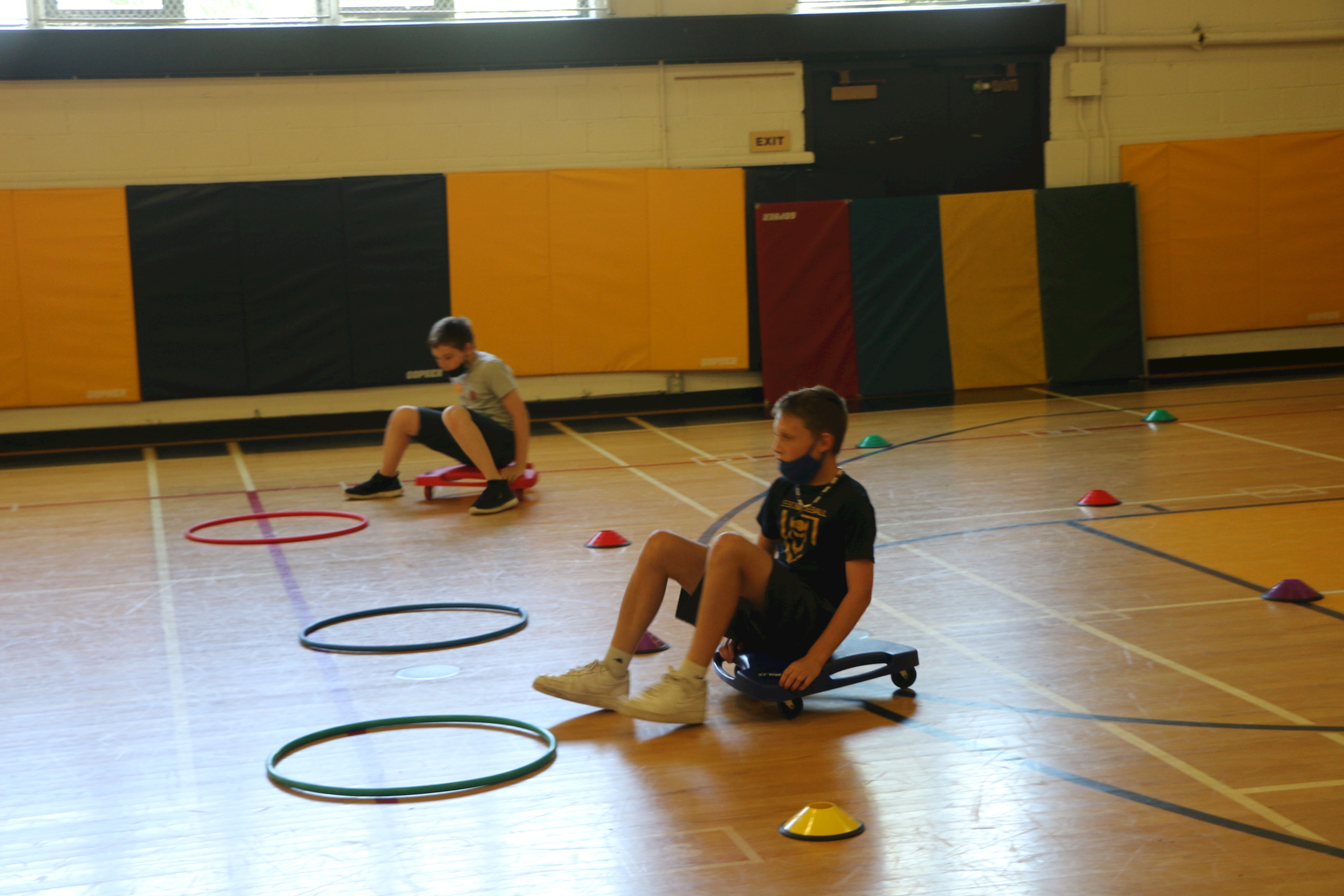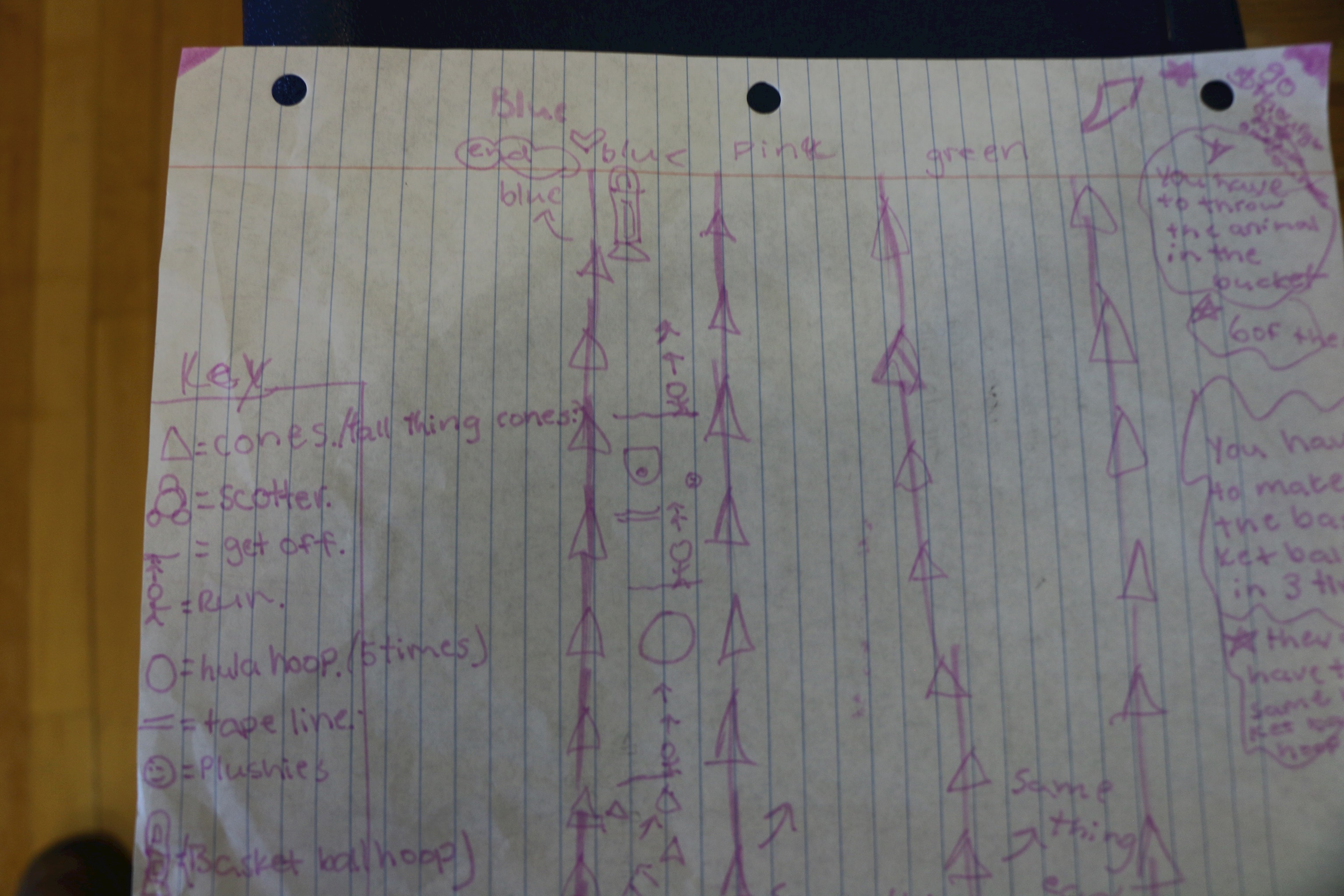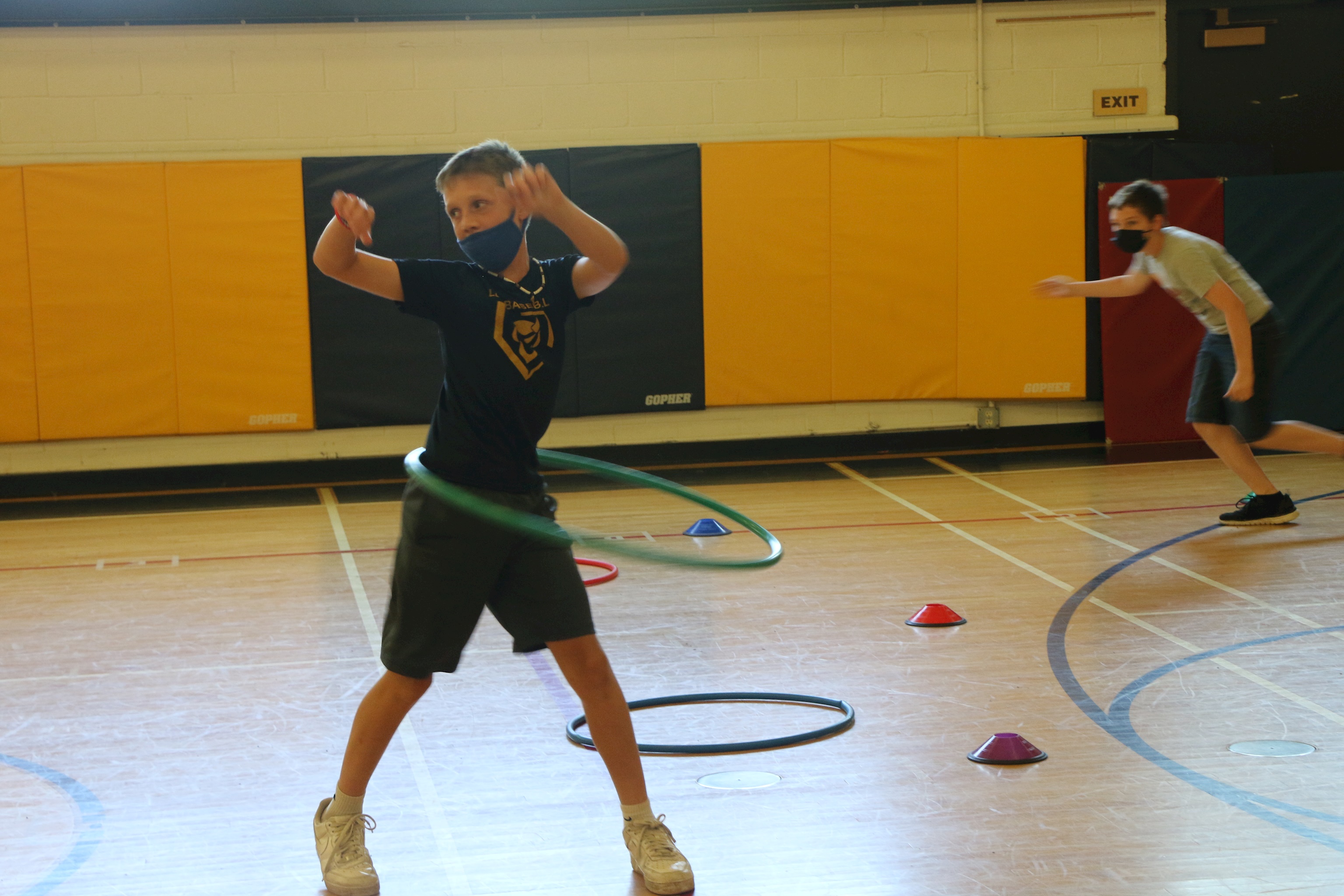Discover our
Home for Learning
- Contact
- 412-624-8020
- [email protected]


When the whistle blows, the students scoot backwards across the gymnasium floor. Gliding on scooters, they circle cones set up about 15 feet from the baseline, going down and back once more before picking up hula hoops.
It’s the last physical education class of the school year, and to mark the occasion, Ms. Hunt’s fifth-graders are completing an obstacle-course relay race.
A fun end-of-school-year activity like this one—the gym echoes with giggles and shouts—is not unusual. What makes today’s obstacle course a little different is that two students designed it, working with Ms. Hunt to prepare a lesson plan for the day.
“We had this idea and we did it,” says one of the two fifth-grade architects of today’s obstacle course. “It took a lot of planning.”
“It was just something to do that would be fun,” adds her partner in obstacle-course design.
Hula hooping complete, students toss a small puffer-fish toy into a bucket at a distance of about 10 feet. Then they race to the far baseline, where foam balls rest atop plastic cones. (The two students helped Ms. Hunt with the elaborate set-up for today’s activity.) Once they’ve shot the ball through the basketball hoop and put the ball back on the cone, the students run back to their teams, tagging in the next relay participant.
Ms. Hunt’s students approached her earlier in the school year with their request to plan a class. She worked with them to come up with the concept of the obstacle course, printing out one of her own lesson plans for them to use as a model.
“We wrote our own directions,” says one student. “And we drew a picture of how the course would look.”
 Ms. Hunt made small adjustments, but says, “It’s mostly their plan.”
Ms. Hunt made small adjustments, but says, “It’s mostly their plan.”
While a student-designed class may be rare, Ms. Hunt’s flexible, individualized approach is a constant feature of her physical education classes, and of Falk’s learning philosophy in general. In addition to making adjustments to ensure that all students can participate meaningfully in class, Ms. Hunt has the leeway to respond to students’ interests.
For example, if a class is really enthusiastic about badminton, she says, they can keep playing it in class for another week or two before moving on to the next unit. That kind of adjustment supports one of the main goals of physical education at Falk: to foster a love of fitness and movement in students, helping them to discover the sport or activity that suits them, thereby paving the way for a lifetime of rewarding physical activity.
As their classmates complete the obstacle course, the students huddle on the sideline, laughing and pointing out little things about how the course is going. One student runs down to reposition the foam balls, which keep rolling off the cones. Outside of school, building and completing obstacle courses is a shared passion.
When the final student has crossed the finish line, the architects step forward.
“Congratulations,” says one. “Now we’re going to make the course harder.”
“We’re upgrading,” adds her partner, laughing as the pair start adjusting cones, adding new obstructions to the course before their classmates tackle the course again.
